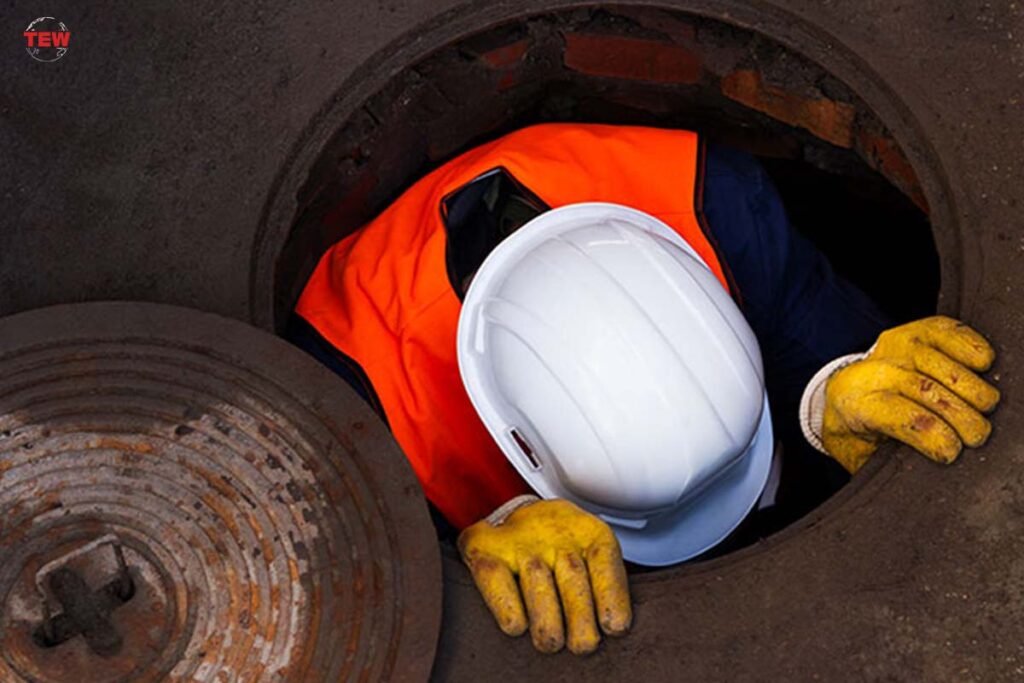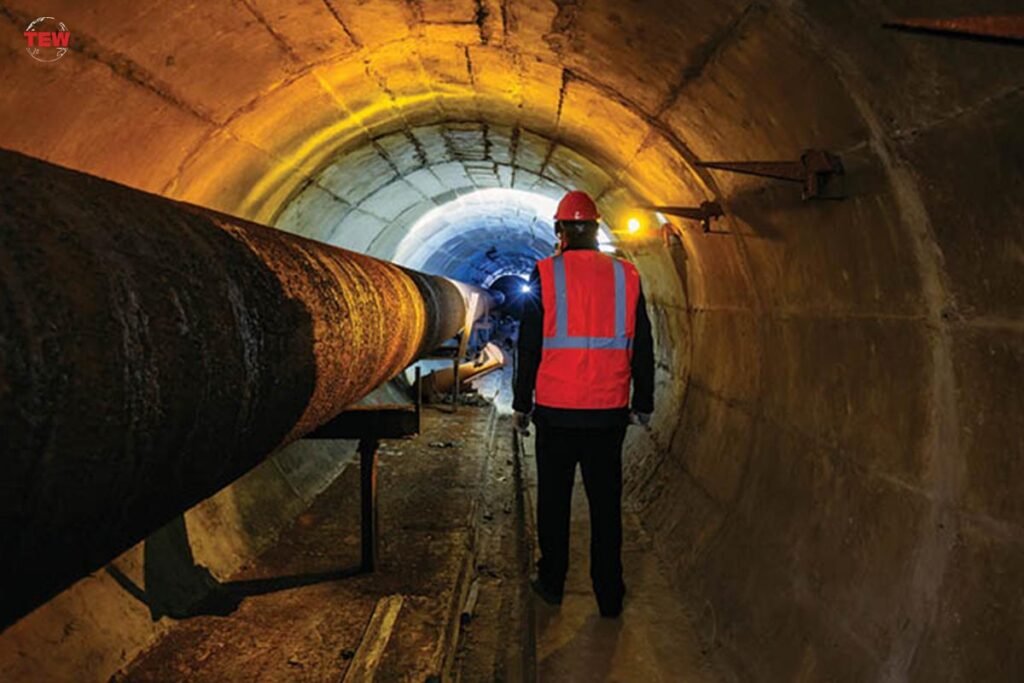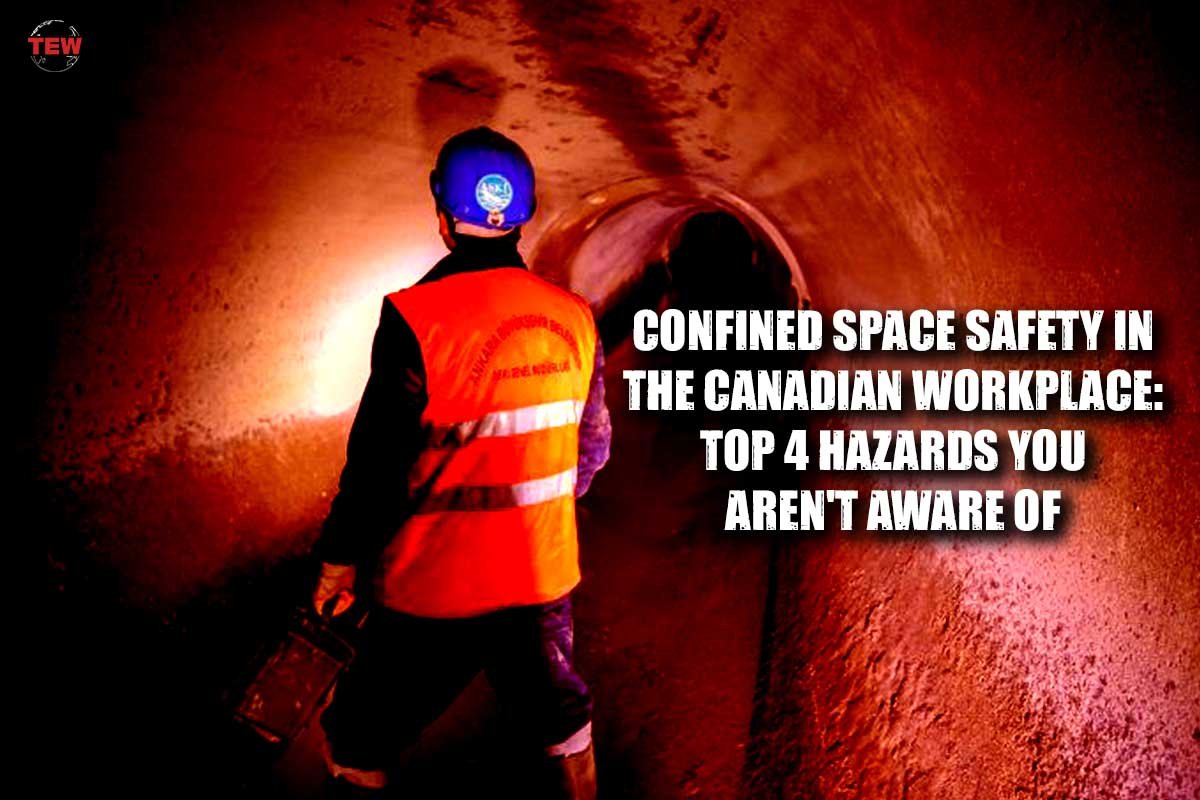There are three requirements that must be met in enclosed environments. The first need, which shouldn’t be too difficult to fulfill, is that the Confined Space should be large enough for a worker to enter, set up their tools, and begin work immediately. When you take into account the other two factors, it becomes abundantly evident how deadly enclosed environments may be.
The second and third factors include the fact that there are few entry and exit points to the territory, as well as the fact that it was not designed to accommodate continuous usage by employees. A restricted place presents several potential dangers, in addition to the obvious ones like as its size and the fact that there are no exits.
What Might Be the Risk?
In such restricted places, problems such as dangling cables, stale air, and other potential dangers are widespread. Examples of restricted spaces include trenches, tunnels, storage tanks, silos, wells, utility holes, and other holes in the ground.
Workers face a special set of risks when they are required to do their jobs in confined spaces like tunnels, manholes, and storage tanks. Due to the restricted access and ventilation in confined areas, it is unreasonable to expect workers to spend considerable amounts of time in these environments.
There is a high risk of significant bodily harm from risks such as lethal gases, electrical components, or equipment, and there is also a threat of entrapment because there are limited ways in which employees may access and exit these places. These risks combine to create a high risk of significant bodily harm.
Research indicates that around 85 percent of organizations who do work for reputable contractors are aware of the dangers associated with accessing restricted spaces and adhere to all safety regulations. Despite this, there are still some people who choose to disregard this knowledge and enter confined spaces without first adopting the appropriate safety measures. Before you place personnel in a confined space, you need to be sure you’ve taken these necessary precautions.
Here Are Top 4 Hazards You Aren’t Aware Of Confined Space Safety ;
1. The Presence of Contaminated Air in Enclosed Spaces:
It was mentioned before that the air, fumes, and/or oxygen levels in a confined space might be hazardous to a person’s health. Enclosed spaces often suffer from the effects of these atmospheric risks because they do not have enough ventilation or air movement. Within the confined space, trained individuals are required to conduct tests to determine the oxygen content, flammability, and toxicity of the air in order to prevent and mitigate issues related to poor air quality.
It is very necessary for a knowledgeable expert to do an air quality assessment just before allowing someone to enter a restricted area. The test should be carried out by a knowledgeable individual who possesses the appropriate detection equipment in order to guarantee that the oxygen levels are within acceptable ranges (between 19.5% and 23.5%, with 20.8% being the optimal range), that there are no air toxins or flammables present, and that the ventilation system is operating as it should.

Mechanical ventilation and natural ventilation are the two most common methods of ventilation used in enclosed spaces. The most effective method for dealing with this issue is to implement mechanical ventilation, which involves making use of blowers, fans, and several other pieces of apparatus. The second form of ventilation approach is known as natural ventilation, and it involves using air currents that occur naturally. Regrettably, it is not always reliable and is not always adequate to keep the air pure. Both options need a lot of careful consideration.
2. There Is an Increased Risk of Fires and Explosions:
Flames and explosions provide a significant and immediate risk to individuals working in a confined space. To protect themselves against these risks, competent specialists need to locate all of the potential ignition sources. It is important for the knowledgeable expert to identify these sources before commencing work in the constrained region.
Ignition sources may come from a wide variety of places, including but not limited to: open flames, sparking electrical equipment, flammable dust, static electricity, and other places. It is important to bear in mind that an explosion or fire cannot take place in a confined space unless there is oxygen, a flammable liquid, and anything that may start it off.
Keeping this in mind can be very helpful. The elimination of these possible dangers should result in an improvement in the overall safety of the working environment for everyone concerned. It is important to keep in mind that the alarm will go off on the majority of the monitors if the lower explosive limit (LEL) is exceeded by 10%.
3. There Can Be Unexpected Biological Dangers:
It’s possible that employees might run into problems if there aren’t any safeguards in place for the biological risks that come with working in tight spaces. Since it is difficult to thoroughly clean and disinfect confined spaces, there is a high concentration of bacteria in these areas.

These bacteria may be found in feces and sludge. In confined spaces, workers who are exposed to fungi, molds, and viruses run the risk of being put on a path towards the development of chronic illnesses.
4. Remains in Addition to Chemicals
There are chemicals with the potential to cause damage when specific conditions are met. There are several possible routes of exposure, including contact with the skin, ingestion, and inhalation of the substance. Chemicals that have been left over from repairs or supply lines might potentially pose a risk.
Companies are responsible for more than simply making sure their employees have a secure place to work; they also need to provide them with equipment that can effectively do their duties. Working in confined spaces has its own one-of-a-kind challenges, and as a result, it is essential for businesses to offer sufficient training for their employees.
Why Is It a Dangerous to Work in A Confined Space?
The air quality in confined spaces is often substantially lower than the air quality in other kinds of jobs, which presents a significant danger to one’s health. It is difficult to breathe since there is little air movement throughout the region, and there is a possibility that there are toxins floating about. This issue is going to get a lot more serious if the temperature inside the structure continues to climb. In the event that a worker is hurt or becomes trapped as a result of an accident, poor air quality makes rescue attempts substantially more of a race against the clock.
In such circumstances, confined space safety training, as emphasized in Canada safety training, is mandatory to ensure that workers are aware of the risks and trained to use appropriate safety equipment to protect themselves and others from hazards in confined spaces.
The risk of falling is high in confined places, making it one of the leading contributors to both injuries and fatalities. Although while falling is never a nice event, the circumstances inside a box or other confined location may make matters considerably worse for the person. When many variables come into play at the same time, as may be the case in the most severe circumstances, the likelihood of serious injury or death as a result of a fall drastically increases.
What Precautions Must Be Followed to Enter a Confined Space?
While going into a restricted area, workers are required to take all of the appropriate safety measures. The first thing the worker is tasked with doing is determining whether or not the location in issue is considered a restricted place. Before being put to any use, confined spaces of any kind are required to have a comprehensive risk analysis and prevention strategy in place.
The second issue that has to be addressed is determining whether or not the job being done in the restricted area is indeed necessary. Workers may sometimes be able to do the same activities in a setting that poses less risks to their health. Check to see that everyone who has been sent to a restricted location really has a reason to be there. If there is a less risky approach to do the work at hand, you should always go with that option.

If you are aware that the task must be completed, you will be more likely to take the necessary precautions to protect yourself. Those employees of the company who go inside the restricted area are referred to as “entrants,” while those employees who remain outside are called “attendants.” When the participants in the restricted section complete their tasks, the attendants wait just outside the entrance.
This way, if there is a problem, visitors will know who to inform, visitors will be able to keep out intruders and obtain aid if required, and visitors will know who to tell if there is a problem. Other potential needs include a separate confined space supervisor as well as rescue service workers who may be called in to enter the area in the event that someone in the area becomes handicapped.
Conclusion
Over 1.6 million workers walk into closed-off workplaces on a yearly basis. Because of the possibility of death or severe injury, it is very necessary for the organization and its personnel to implement safety measures in order to limit the likelihood of being hurt.
If all organizations were to comply to the confined space safety requirements in a stringent manner, it is estimated that 53 deaths, 5,000 lost workdays, and 5,700 more accidents may be averted annually. Every year, a significant number of people suffer life-threatening injuries and lose their lives as a result of employers and workers failing to properly evaluate, plan for, and manage the hazards associated with working in tight spaces.
But, if you adhere to all of the requirements and adopt the appropriate safety measures, you may reduce the dangers that your employees face as a result of working in a confined space.




